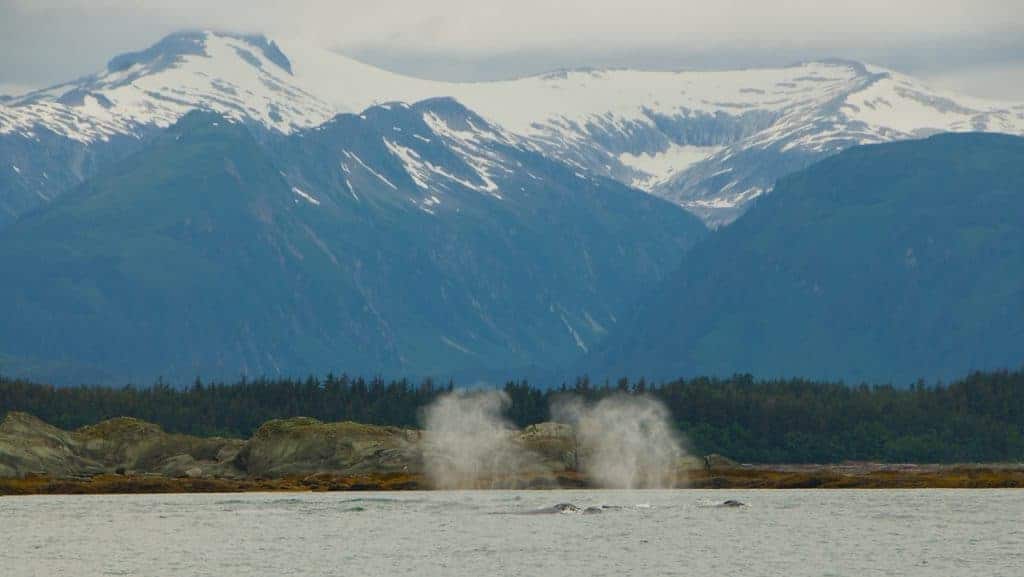As hungry humpback whales begin heading north to feast on krill and other delicacies, whale season comes to an end here in Hawaii. We—and they—assume that krill will be plentiful when they arrive at their feeding grounds. But what exactly is krill and how sustainable of a food source is it?
Krill (Euphausiacea) are shrimp-like, bioluminescent crustaceans found throughout the world’s oceans, but not notably in Hawaiian waters. They can grow to five or six centimeters, with some species living up to ten years. In the open ocean, krill form huge swarms, moving up toward the surface during the daytime and back down into deeper waters at night. Krill are primarily filter feeders subsisting on phytoplankton and algae.
When humpback whales “bubble feed” in Alaska or the Antarctic, krill dominate the menu. A group of whales encircles a school of krill, plankton, and small fish, forming a cylindrical net of bubbles. With mouths wide open, they then lunge into the cloud of prey. Each whale consumes a ton or more of food per day during the summer feeding season. This protein-rich diet enables them to pack on enough blubber to swim thousands of miles to warmer waters for the winter, where they breed and give birth without eating much of anything.
Humpbacks aren’t the only whales to rely heavily on krill; other baleen whales, such as blue whales, could not survive without krill; it’s the cornerstone of their diet.
Commercial harvesting of krill for fish bait and fish food began in the mid-1960s. Up through the turn of the 20th century, krill was still considered a largely untapped and richly abundant resource. Krill’s value and uses in the marketplace have since skyrocketed. These tiny, translucent creatures are now known as “pink gold.”
According to the National Oceanic and Atmospheric Administration (NOAA), pink gold is increasingly being harvested to serve as a source of omega-3 fatty acids in human diets. People have quickly become major krill consumers as they embrace krill-containing food supplements and other products. In some countries, krill can be found in supermarkets alongside canned tuna or sardines. Internet shopping sites now offer for purchase over a thousand krill-based items, including pet foods and beauty formulas.

NOAA describes the Antarctic ecosystem, prime krill fishing grounds, as “krill-centric.” Considered an irreplaceable “keystone species,” this nutritional mainstay supports not only whales but seals, seabirds, various fish species, squid, and other creatures. Industry critics warn that factory ships are taking too much krill. A related issue is that fingerling and larval fishes often wind up as accidental by-catch, further impacting the food chain for marine life. The challenge is to balance the human appetite for krill products with the needs of ocean creatures, such as the great whales, in a way that is sustainable.
Our warming oceans offer additional challenges. Krill thrive in icy-cold waters where their favorite algae grows on the underside of sea ice. Thick sea ice during the winter has long served as an indicator that krill will be plentiful when summer comes. Receding polar ice provides evidence of changes in ecological conditions considered necessary for healthy krill populations. This in turn could impact humpbacks. The hope for krill and those hungry humpbacks is that both populations can remain globally stable for many years to come.
Pam Daoust is a Contributing Writer for Maui Ocean Center. Ka Mo‘olelo Moana, or “the Ocean Story,” is a monthly column submitted by Maui Ocean Center staff members and contributing writers. Originally published in The Maui News on Sunday, April 3, 2016.
Immerse Yourself in our SEA-News featuring Hawaiʻi’s marine life, inspirational conservation, and glimpses behind-the-scenes.


